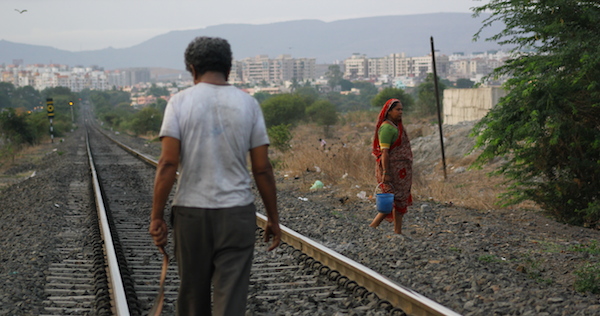The Lack of Facilities
Studies in India find impediments to progress that may surprise you

If I were to list all the things in my life for which I am grateful, somewhere near the top—after family and friends—would be a flush toilet in my home.
For those who have them, toilets are easily taken for granted. However, 1.1 billion people in the world practice open defecation, and two-thirds of them (626 million) live in India. In particular, the absence of toilets has a huge impact on Indian women who live with constant fear when they “go.”
No Relief, a short video produced by Lakshmi Anantnarayan, features the voices and faces of women living in the slums of Pune, a large metropolis in the Indian state of Maharashtra. As the women relate, relieving themselves outside—or delaying these acts out of fear—carries immense risk: the menace of rape, assault, or being spied upon by men; the threat of being chased by police; kidney stones and urinary tract infections. “We have no toilets,” says one woman. “We go outside. We bathe outside.”
To quote The Bill & Melinda Gates Foundation, “Among women, toilets figure in the top three needs for their own security and health.”
But a recent study uncovered considerable obstacles to implementing sanitation programs in India and ensuring their success. The study examined the health impact of India’s Total Sanitation Campaign (TSC) on 80 rural villages in Madhya Pradesh, a state in central India.
The TSC (now called the Clean India Campaign) offers subsidies for indoor house latrines and also promotes school sanitation, hygiene education, and preschool toilets. Beginning in 2009, Sumeet R. Patil and his colleagues at the Mumbai-based Network for Engineering and Economics Research and Management investigated the impact of TSC interventions in 40 villages and compared them to 40 control villages. They examined more than 3,000 households and analyzed the health effects of latrines on more than 5,200 children under five years of age.
Access to household latrines, the authors predicted, would be associated with a decline in transmission of bacteria, viruses, and parasites that infect the human gut—to which people are exposed when they defecate outside. A reduction in these infections should also be associated with a decrease in the incidence of anemia as well as improved height and weight in children.
But the study found that although the percentage of households with latrines in the “intervention villages” increased by 41 percent, the number of adults in these villages who reported that they defecated outside declined only somewhat, from 84 percent to 73 percent. The incidence of diarrhea and parasitic infections in children did not differ between the two groups of villages, and there was no improvement in average child weight or height and no decline in anemia in either group of villages.
The findings are dire and beg for improvement. “I wish I or anyone for that matter knew the precise answer,” Patil told me in an email. “Obviously, the best approaches may integrate improving sanitation infrastructure with intensive behavior change to actually use that infrastructure.” In other words, convince villagers to use the toilets.
The research covered only one small region, Patil noted, and the TSC “may have been more successful elsewhere in India where higher level of toilet use was achieved. … India is too diverse a country for one paper from one state to make a conclusion about the program all over India.”
And while the TSC may not have shown tangible health benefits in this case, the program itself, Patil says, may offer “other non-health benefits to sanitation such as privacy, dignity, and school attendance [that] this study did not investigate.” Such benefits would certainly appeal to the slum dwellers of Pune. Lakshmi Anantnarayan told me via email that the women she met while making her video were “amazing. It makes one angry that they need to go through this level of unimaginable and unnecessary stress constantly.”
Next Week: Why some people prefer the open air.

